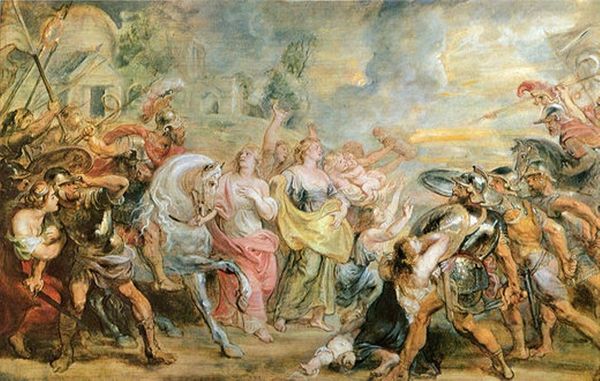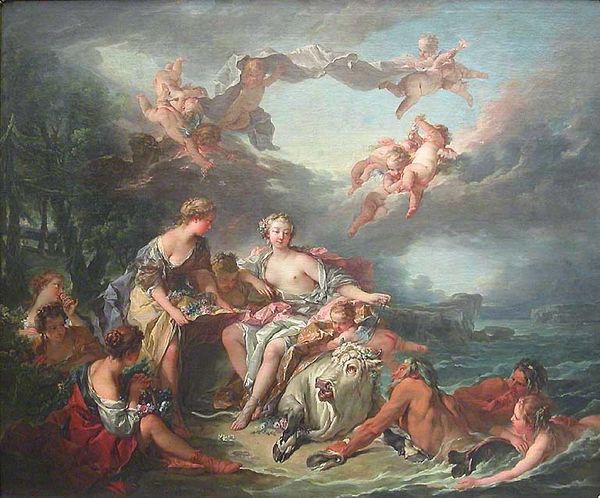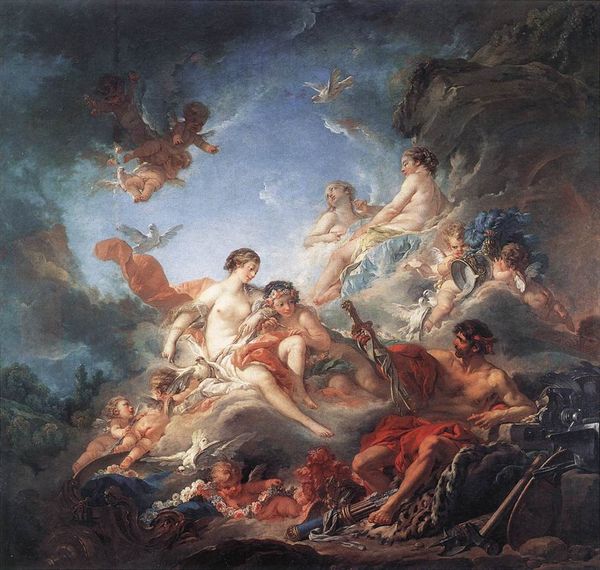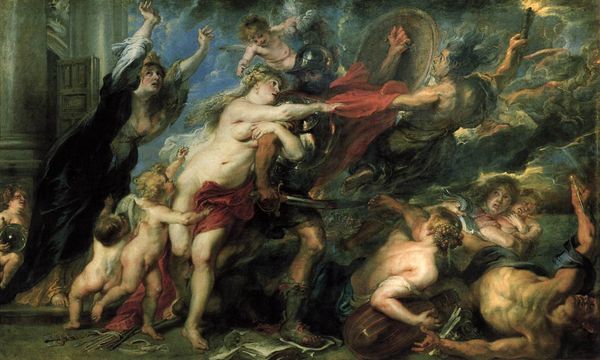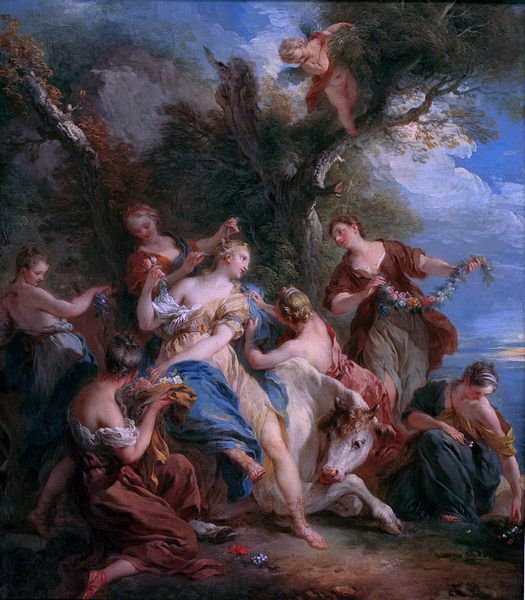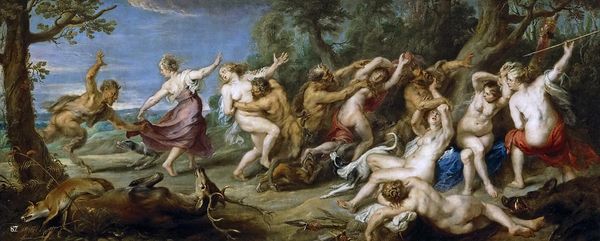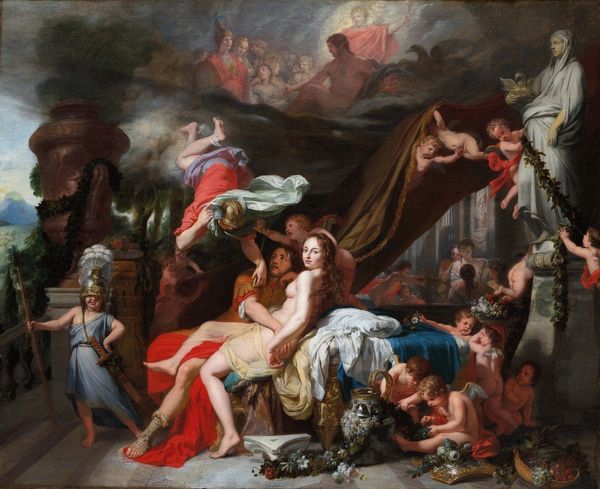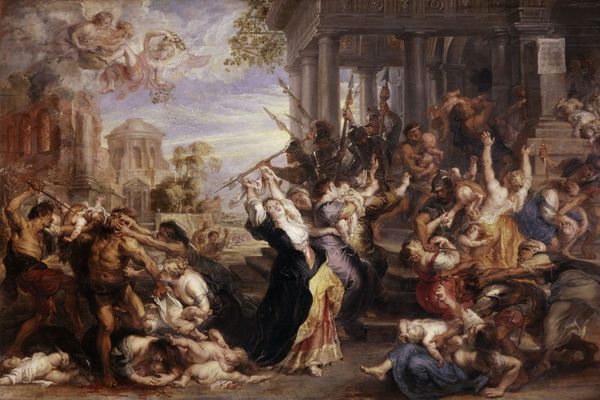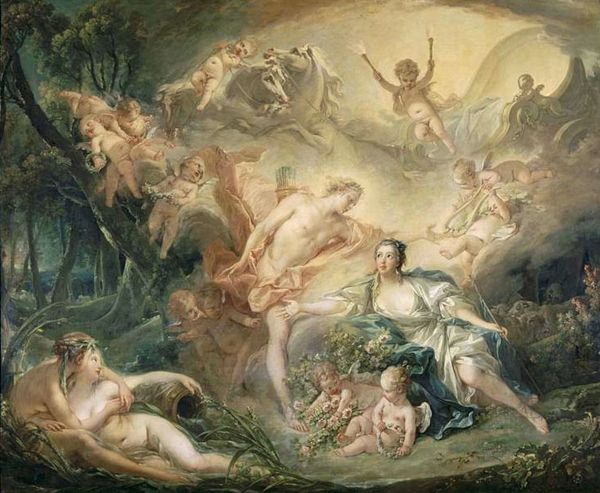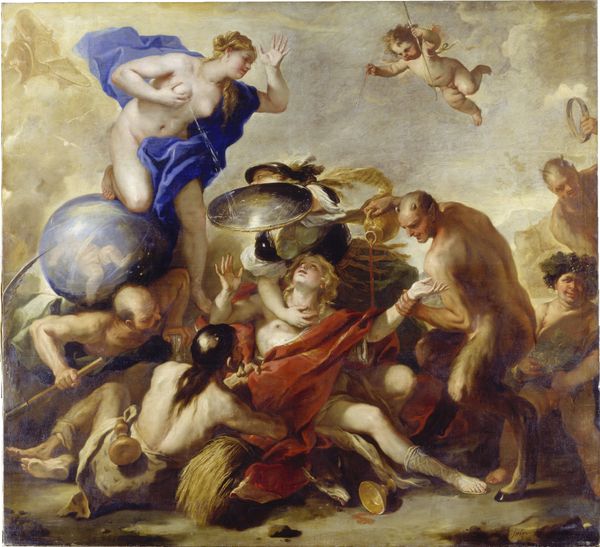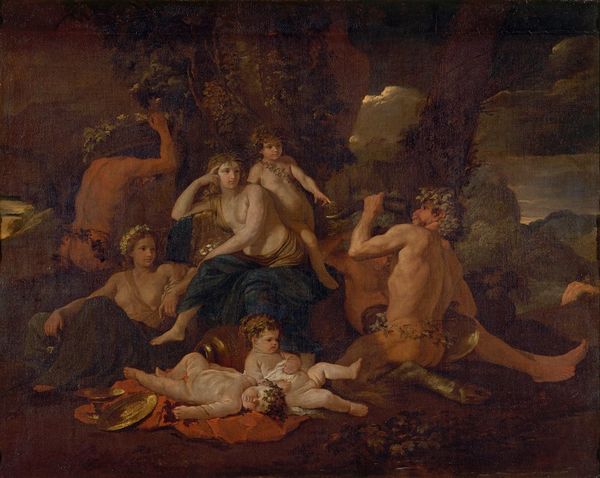
#
abstract expressionism
#
abstract painting
#
possibly oil pastel
#
oil painting
#
fluid art
#
acrylic on canvas
#
underpainting
#
paint stroke
#
painting painterly
#
watercolor
Copyright: Public domain
Sebastiano Conca painted with oil the mythical vision of Aeneas in the Elysian Fields. Here, we see Aeneas guided through the realm of the dead, a classical trope symbolizing the hero's journey and the attainment of knowledge. Note the prominent figure of Mercury, winged and holding his caduceus, a symbol of commerce and negotiation, but also a guide for souls. Consider how this symbol appears in ancient Greek art, where Hermes, his Greek counterpart, performed a similar function. Over time, this motif has evolved, appearing in various contexts, such as in alchemical illustrations, where Mercury represents transformation. The Elysian Fields themselves are rendered as a pastoral paradise, reflecting a collective longing for an ideal afterlife, a motif that taps into our deepest subconscious hopes and fears. The depiction of Aeneas, clad in armor, conversing with Anchises creates an emotional tableau, a poignant moment of reunion and revelation. The image of Mercury, as a guide, recurs throughout art history, mirroring our continuous search for direction. It’s a non-linear, cyclical progression, as symbols resurface, evolve, and take on new meanings in different historical contexts.
Comments
No comments
Be the first to comment and join the conversation on the ultimate creative platform.
